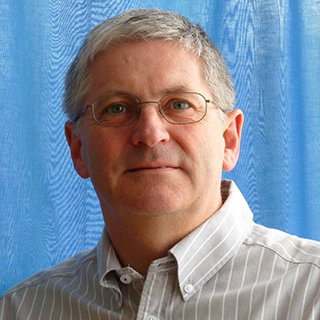Virtuous Circles: collective giving is a powerful way to develop better donors
Getting together to give is not new. People have acted collectively to donate their money or time for generations. But over the last decade there has been renewed interest in “giving circles”, which appear to be enjoying a surge in growth in North America, Europe and Asia. Why is this important for the charity sector?
At its simplest, a giving circle is formed when a group of individuals pool their resources of money and time, then together decide which charity or community group to support. There are many variations to this core process, but the majority share a handful of common characteristics:
• Independence: Circles are not ‘owned’ by anyone besides their members and they are not tied to one particular charity. They may, however, be networked with other circles or in partnership with other philanthropy organisations (especially community foundations).
• Engagement: Members roll up their sleeves and get involved in organising the circle’s activities - identifying and evaluating potential grantees; grant administration; visiting projects and reporting back to members. Some volunteer their time and skills to the charities the circle has decided to fund.
• Socialisation: The circles socialise the act of giving by encouraging members to meet socially and participate in the grant making process.
• Education: Circles offer an educational environment where members learn to ‘do philanthropy’ alongside their peers, meet local charity leaders and weigh up the views of invited experts. This impacts on the knowledge, attitudes and practices of giving circle members – and evidence exists to support this.
Most of what we know about giving circles comes from studies in the US, where they have a much higher profile than in Europe and where their number has tripled to over 1,000 since 2007, according to the 2017 report of the Collective Giving Research Group. Recent research by Angela Eikenberry (University of Nebraska) and Beth Breeze (University of Kent) has started to document a growing number of circles in the UK and the Republic of Ireland. In the last few months, giving circles have got off the ground in Bath and Belfast.
My own interest in giving circles began in 2013 when researching innovations in Asian philanthropy while at NUS Business School in Singapore. I was particularly intrigued by the potential giving circles have to enhance the ‘giving journey’ of donors, while providing charities with much needed resources. I categorised the giving circles I found as either ‘indigenous’ or ‘transplanted’ - to indicate whether they had been initiated within Asia or had strong links to circles in the US or Europe. In 2017 we surveyed 38 giving circles in 10 Asian countries to understand how giving collaboratively impacted circle members.
What we found was broadly in line with similar studies in Australia, the UK and US. The majority of giving circle members (86%) felt being part of a circle made them better informed about the charity sector and social issues; and more positive about the work of charities (87%). This led to over half of individuals increasing their level of charitable donations generally (55%) and believing their giving was more discerning, strategic and focused on outcomes (58%). The giving circle members I interviewed were clearly moving from being ‘passive’ givers to engaged donors – with 44% volunteering their time to a charity being supported by their circle and 39% helping to monitor and evaluate projects through field visits. In Asia we found that most circles set an expected monthly or annual donation from each member, although the figures varied widely from one circle to another. While some expected members to donate as much as US$ 5,000 annually, others kept the donation much lower (a few hundred dollars, perhaps topped up at bonus time or for special gifts).
These studies support the suggestion that giving circles provide a learning environment where philanthropy is a socialised and enjoyable act. That’s doubtless a good thing for giving circle members and philanthropy as a whole. But the small number of giving circles and their patchy distribution means that few charities will ever benefit from their donations and engagement. One way to bring the benefits of the giving circle to a larger number of charities is by developing what are sometimes called “donor circles”. A donor circle differs from a giving circle as it’s likely to be created by a charity for a group of its loyal supporters who commit to raising funds exclusively for the organisation. We know much less about the potential of donor circles to bring about benefits of self-organised, independent giving circles. But perhaps charity fundraisers can learn from the success of giving circles in changing donor behaviour and apply these to donor circles:
• Create donor circles locally so that members can easily meet for social events and circle business. This also makes it easier for members to invite their friends and colleagues to join the group. In Asia we found that 62% of members had introduced a friend who joined their circle.
• Foster independence within the circle by avoiding too much prescription about how funds are allocated. Even though a donor circle is usually expected to raise funds only for one charity, provide a menu of options so that members can choose between different projects. Reaching such decisions is collaborative and a valuable learning experience in philanthropy. Seek feedback from the group about the charity’s mission and operations so members become your ‘critical friends’.
• Provide educational opportunities. Tailor reports and educational materials so they encourage group discussion and help members reach funding decisions. Where appropriate design field visits for group members as part of their own project evaluation.
• Encourage member engagement. Offer a level of administrative support that the circle is comfortable with, but otherwise encourage members to take ownership by running as they wish and with their own volunteering time. Depending on the nature of the charity’s work it may be possible to offer members the opportunity to volunteer with the charity at a strategic level or in a project.
Collective giving, whether through a giving circle or a donor circles linked to a charity, provides a powerful vehicle for helping individuals grow and mature as donors. Motivated and engaged donors are likely to be better for your charity and for the sector as a whole. If you want to find out more about my research in Asia or background on giving circles generally, please visit my website.
Rob John is an independent philanthropy researcher based in Cambridge with over 30 years’ experience in the charity, international development and philanthropy sectors. He was instrumental in creating two major philanthropy networks and has been a research fellow at business schools in Oxford and Singapore. Rob is a Consultant at the Centre for the Study of Philanthropy and Public Good at St. Andrew’s University. His work can be accessed through about.me/robjohn/
If you would like to talk to Rob about how he can help your fundraising team establish Giving Circles to develop your donors, do get in touch via office@actionplanning.co.uk


